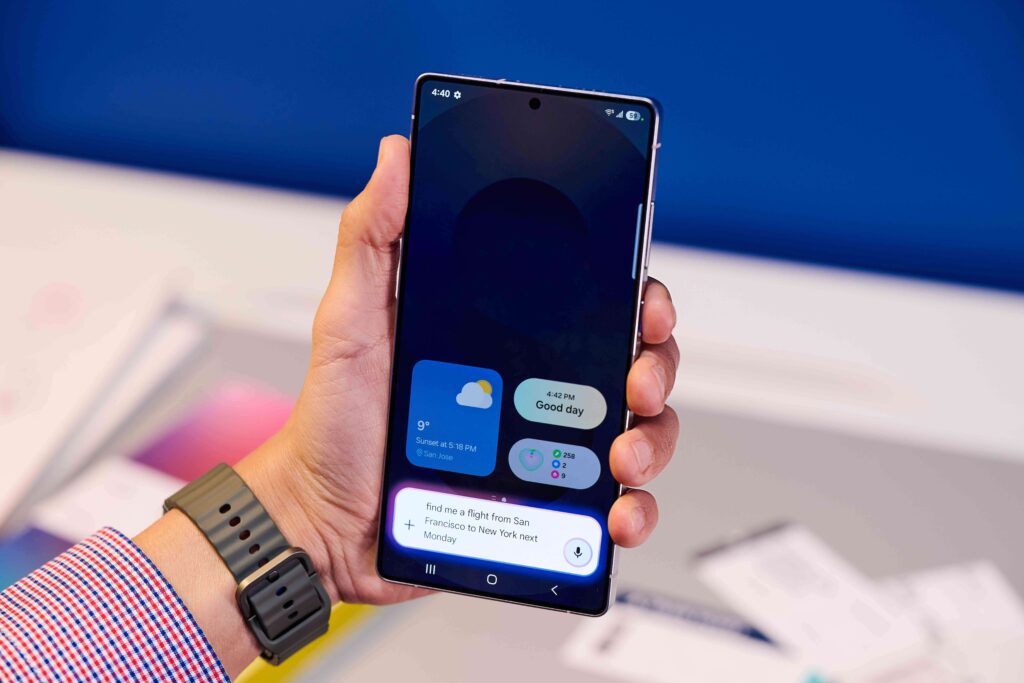Samsung confirms the Exynos 2600: The next generation AI arrives on the Galaxy S26
Samsung has finally lifted the veil on its upcoming Galaxy S26 series. During its third-quarter 2025 financial results conference, the company confirmed several key details regarding its future flagship devices, highlighting a next-generation AI, an innovative chipset, and redesigned camera sensors.
This marks the first time Samsung has publicly addressed the S26, following months of conflicting leaks regarding the lineup and launch schedule.
A Next-Generation AI at the Heart of the Experience
Daniel Araujo, Vice President of the Mobile Experience division, stated that the Galaxy S26 series will: “Revolutionize the user experience with a next-generation AI, while offering its own second-generation chip, enhanced performance, and new camera sensors.”
This announcement confirms that the Galaxy S26 will feature the new Exynos 2600 chip, at least in certain markets. Developed in-house and fabricated using 2nm technology, this processor is set to be much more competitive against Qualcomm’s Snapdragon 8 Elite Gen 5, which is built on 3nm technology.
Initial benchmarks seen on Geekbench suggest comparable CPU and GPU performance between the two platforms—a first for Samsung in years.
An Exynos 2600 Chip at the Core of Strategy
The return of the Exynos chips in European and Asian models now seems confirmed, while the United States will continue using Snapdragon variants.
This dual approach would allow Samsung to lessen its reliance on Qualcomm while showcasing its technological expertise.
- Fabrication: 2nm GAA (Samsung Foundry)
- CPU: custom architecture optimized for embedded AI
- NPU: AI 2.0 for image processing and intelligent assistant
- GPU: derived from AMD’s RDNA 3 architecture
New Camera Sensors in the Works
However, details regarding photography remain murky. Araujo mentioned “new sensors” without specifics, but several leaks help paint a clearer picture.
According to leaker @Jukanlosreve, the Galaxy S26/S26 Pro will use a combination of two 50-megapixel sensors: a Sony IMX 1.0 µm sensor in certain regions and a Samsung ISOCELL GN-series sensor elsewhere. This dual sourcing aims to enhance dynamic range and light management based on regional markets.
Not true.
The main sensor of the S26 Pro uses a new sensor compared to the S25 vanilla.
The main sensor used in the S26 Pro will be a combination of Sony’s new 50MP 1.0 µm sensor and Samsung’s new 50MP sensor, applied differently depending on the region. https://t.co/EzaOXDMjiW
—Jukan (@Jukanlosreve) October 1, 2025
The Galaxy S26 Ultra, on the other hand, is expected to feature a revised 12-megapixel 3x telephoto lens, up from 10 megapixels in the previous generation, while retaining the 10x periscope lens and the 200-megapixel main sensor.
While this may not seem revolutionary on paper, this evolution aligns with the “new sensor” mentioned by Samsung.
A Repositioning of the Lineup
Recent leaks suggest a significant reshuffling of the series:
- The Galaxy S26 Edge is reportedly cancelled,
- The Galaxy S26+ is making a comeback,
- The global launch is being pushed back to March 2026 instead of February, to align with the production of the 2nm SoC.
Samsung Aims to Catch Up with Apple in Embedded AI
The tone of the conference resonates with Apple’s strategy: the integration of local generative AI features. Samsung could unveil an enhanced version of Galaxy AI, featuring:
- Automatic content summaries,
- Improved contextual translation,
- AI-assisted image generation directly in the camera app,
- And a more natural voice assistant operating locally on the Exynos 2600 chip.
Samsung is preparing for a strategic overhaul of its Galaxy S26 lineup, betting on artificial intelligence and 2nm fabrication to create a true break from several years of continuity.
If the promises of “next-generation” AI and improved sensors materialize, the S26 could represent the most substantial generational leap since the S21 Ultra.




